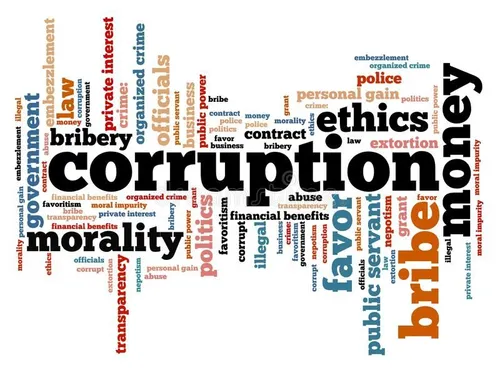· IT
Marx and the Corporations: Chapter 6 - The Bureaucracy
Bureaucracy thrives in large corporations, driven by control and underperforming employees. Excessive approval layers and narrow spans of control hinder efficiency. Spreadsheet Managers and Auditors exemplify bureaucratic roles, often prioritizing data over action and operating in secrecy.

Initially, the chapter was called "The Bureaucrats," but I soon realized that people are not born with a pro-bureaucracy gene; at least, I am unaware of it. People become bureaucrats as they perform in a specific environment, which nurtures a natural tendency. The term bureaucracy comes from a combination of two languages: bureau, which means desk in French, and kratos, which means power in Greek. Basically, bureaucrats are business or government administrators, not productive workers. These days, the term has a pejorative connotation, though.
The bureaucracy reaches its perfection in communist regimes for two main motives: the need for control at all societal levels and, second, to offer jobs to a large number of people, many of them challenging to use in other sectors for different reasons, including poor skills.
Large corporations have a tendency for bureaucracy, which also comes out from two causes: one is the need for tight control, and the second is related to the individuals who stick with the company and are too complex and expensive to let go. So, the company offers them jobs as administrators. Unfortunately, not all these experienced people are good at their jobs; on the contrary, they could become pure bureaucrats and business bottlenecks. Most of the time, they come with a high cost for the company and produce damage within their chain of command through delays in the approval process, lack of decisions, making a lot of noise in the system, and annoying other colleagues, mainly the ones below their management level.
Administrators are also the primary source of information. There are companies similar to the communist model, where delation is accepted readily, even encouraged. In communist Romania, people could inform the government or the Party about the "enemies" of the regime anonymously without signing the incrimination letter.
Similarly, in today's corporate business, any information received is considered and acted upon through an internal investigation; the whistleblower is not punished; on the contrary, he is encouraged to continue and even promoted for vigilance, regardless of whether the information was valid. Conversely, let's think about a corporation of hundreds of thousands of people spread across the globe in tens of countries. We quickly understand the risks of doing business and the need for tight control, hence a high bureaucracy. Well, within some limits.
In my experience, I encountered all kinds of approval processes, but one left me perplexed. It had 25 twenty-five levels of approval and was not some high-level planning, strategy, etc. In time, I discovered the rationality around that. The first is related to the job security of the people who fulfill the roles on the list; the second is an excellent way to dilute the responsibility of those approvers. Who is to blame if something goes wrong after everyone approves it? Last but not least, it isn't very encouraging for anybody who would think to start the process. The example is rather old and extreme, of course, but it shows that corporations could be in different stages of bureaucracy during their long-standing experience.
There are several ways to measure the bureaucracy level within corporations. Let us stop on two of them: the Span of Control and Management Layers, which, by the way, are connected. The Span of Control or the average number of people reporting to a manager could range in corporations from 8-10 people for consulting companies, for a high level of seniority and the rarefied air of top management, to 15-20 people in Business Process Outsourcing and IT delivery centers, jobs with a lower level of seniority. Everything above an average of 20 is not manageable, implying risks.
How the Span of Control is set has always been a paradox to me. The more experienced people one has under control, the lower the number. Why? The average should be lower when one deals with junior people as they need coaching, mentoring, and career advice, meaning more time for the manager to spend with them.
The number of Management Layers is closely connected to the Span of Control. For large corporations, +50.000 people, something between 7-9 layers sounds acceptable. Unfortunately, in many corporations, half of the layers are used for an insignificant number of people, while the other half covers 95% of the company population. This creates a narrow pyramid, a big sign of bureaucracy, and a need for more management empowerment. The Management Layers number is one of the KPIs which analysts consider when they judge the bureaucracy within a company, so most leaders take this very seriously despite the reluctance of the actual managers. A flat organization is more flexible and accessible than a vertical one. However, as I explained earlier, implementation is more difficult when one needs many roles for all the promoted bureaucrats.
I will finish this chapter by mentioning two of my favorite bureaucracy roles: the Spreadsheet Manager and the Auditor. A Spreadsheet Manager is a person who does not manage people, projects, or processes. They manage a set of spreadsheets, most of the time, that has behind some reporting tools. Interestingly, they communicate the spreadsheet figures mostly upwards on the chain of command. They are invited to all escalations, tactic, or strategic meetings and calls to explain why the numbers look how they look to the top managers, who do not have enough time to understand by themselves the complex reports. A Spreadsheet Manager is responsible only for the accuracy of the data, not much for the actions to improve them, which makes this role a job for a lifetime.
I have seen so many accurate reports, but they were missing important factors, which made them impracticable or directed to wrong conclusions. The reason was that the Spreadsheet Manager should have checked with the ground-level people all the data, with the people who were making those numbers. As I am an optimist, I would say that GenAI will improve this role shortly, maybe even make it redundant. I am joking, of course!
Auditors are the most dangerous species of bureaucrats. Typically, they are experienced, bitter people with a background connected somehow with organizations like Stasi, MI5, FBI or KGB/FSB. Or at least they behave like having such a background. You won't find young guys in such a role mainly because they do not enjoy doing it. Beheading people is fun at my age. You won't see them laughing; their humor is non-existent or, at most, creepy. In a face-to-face meeting, they will stare at your watch, and God forbid it is an expensive one. They are brilliant at putting the facts in a puzzle, which makes everyone guilty. They behave as in the old saying: if it looks like a duck, walks like a duck, and quacks like a duck, then it just may be a duck. Or not.
The duck analogy means that if one is born and raised in a particular country, region, or geography, one is profiled based on that. This explains why some regions of the world are considered corrupt, misogynistic, or discriminatory, while others are perceived as eradicating all these plagues. To understand that I am correct, check in with a few large corporations where the managers of the Internal Audit or Compliance are based. The reality is that there are more investigations in those regions that are in focus, and obviously, they end up proportionally with more people found guilty. But percentage-wise, there is no significant difference and my personal view is that bad corporate people are spread evenly around the globe. World’s perception is different though.
Few other things to remember: first, these super bureaucrats work in a highly secretive environment; very few people in the organization know their sources as they would be guilty of GDPR breaches; second, they are always right; one cannot debate their POV as they could become a target themselves. Third, they report to the top of the organization, even beyond CEO’s control. They are untouchable.
I will stop here. Maybe some other time, we'll return to this critical topic of bureaucracy, which is recognized as a significant differentiator between corporations and has a tremendous impact on corporate profitability.
Next chapter: 7. The Management



